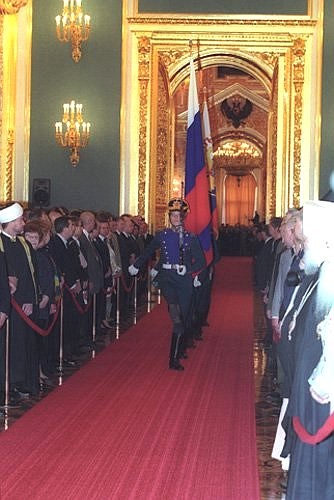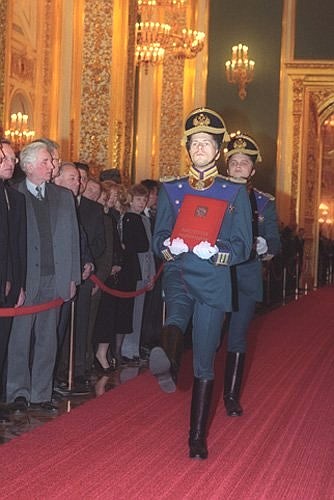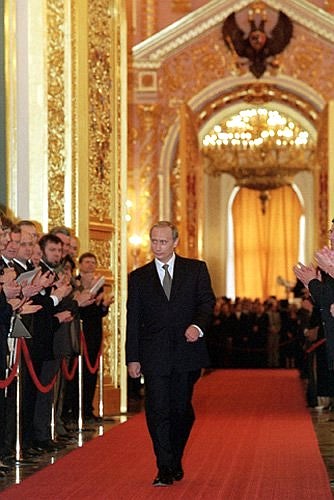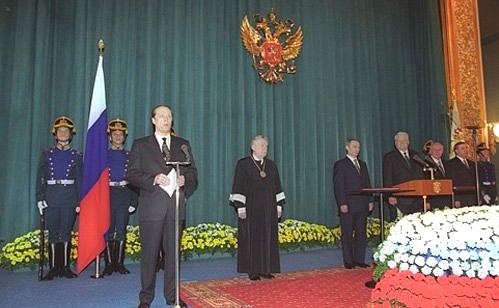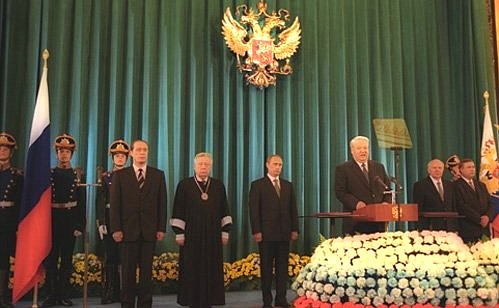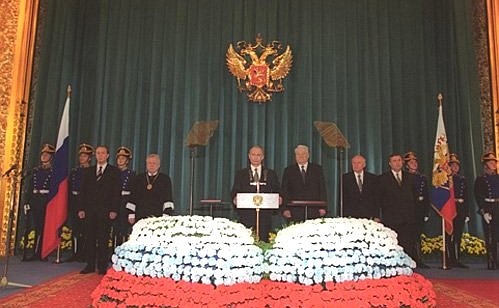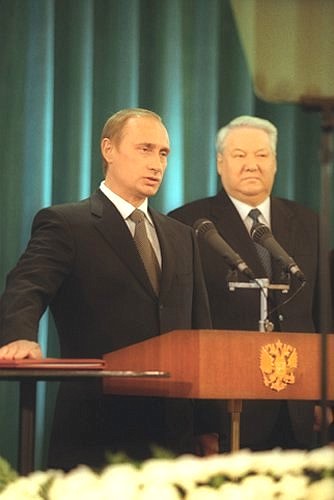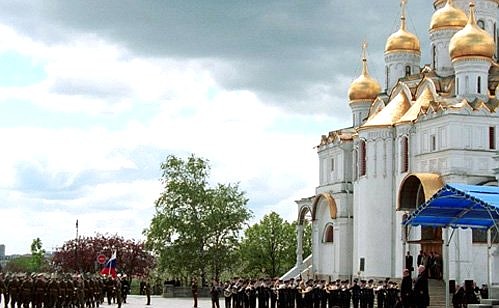The inauguration ceremony began when the Presidential Standard, the State Flag, the Presidential Badge and a special copy of the Constitution were brought to the St Andrew Hall of the Grand Kremlin Palace.
Boris Yeltsin, the first President of Russia, Chairman of the Constitutional Court Marat Baglai, CEC Chairman Alexander Veshnyakov, Yegor Stroyev, Speaker of the upper house, and Gennady Seleznyov, Speaker of the lower house, waited for Mr Putin at a special platform.
About 1,500 guests, including 448 deputies of the lower house, 175 members of the upper house, and 19 judges of the Constitutional Court, as well as members of the Government and representatives of federal bodies of authority and the diplomatic corps, and heads of diplomatic missions attended the ceremony.
The presidential cars entered the Kremlin several minutes before midday. Mr Putin entered the Grand Kremlin Palace and proceeded to the St Andrew Hall, where he mounted the platform at midday.
The first speaker, Mr Veshnyakov, announced the official results of the presidential election.
Mr Putin took the oath. In accordance with the Constitution, the elected president takes his post by taking the oath. At that moment, the Presidential Standard was raised over the Senate Palace.
Boris Yeltsin made a short speech encouraging the new head of state to build a new Russia on the principles of freedom and with reliance on the new generation. After that, Mr Yeltsin handed over the Presidential Badge to Mr Putin.
Vladimir Putin addressed the audience: “I understand that I have taken on a great responsibility, and I know that in Russia the head of state has always been and will always be the person who is responsible for everything in the country.”
After the ceremony, Mr Yeltsin and Mr Putin went out onto Cathedral Square, where the new President listened to the report made by the commander of the Presidential Regiment.
The inauguration ceremony ended with a march by the regiment.
